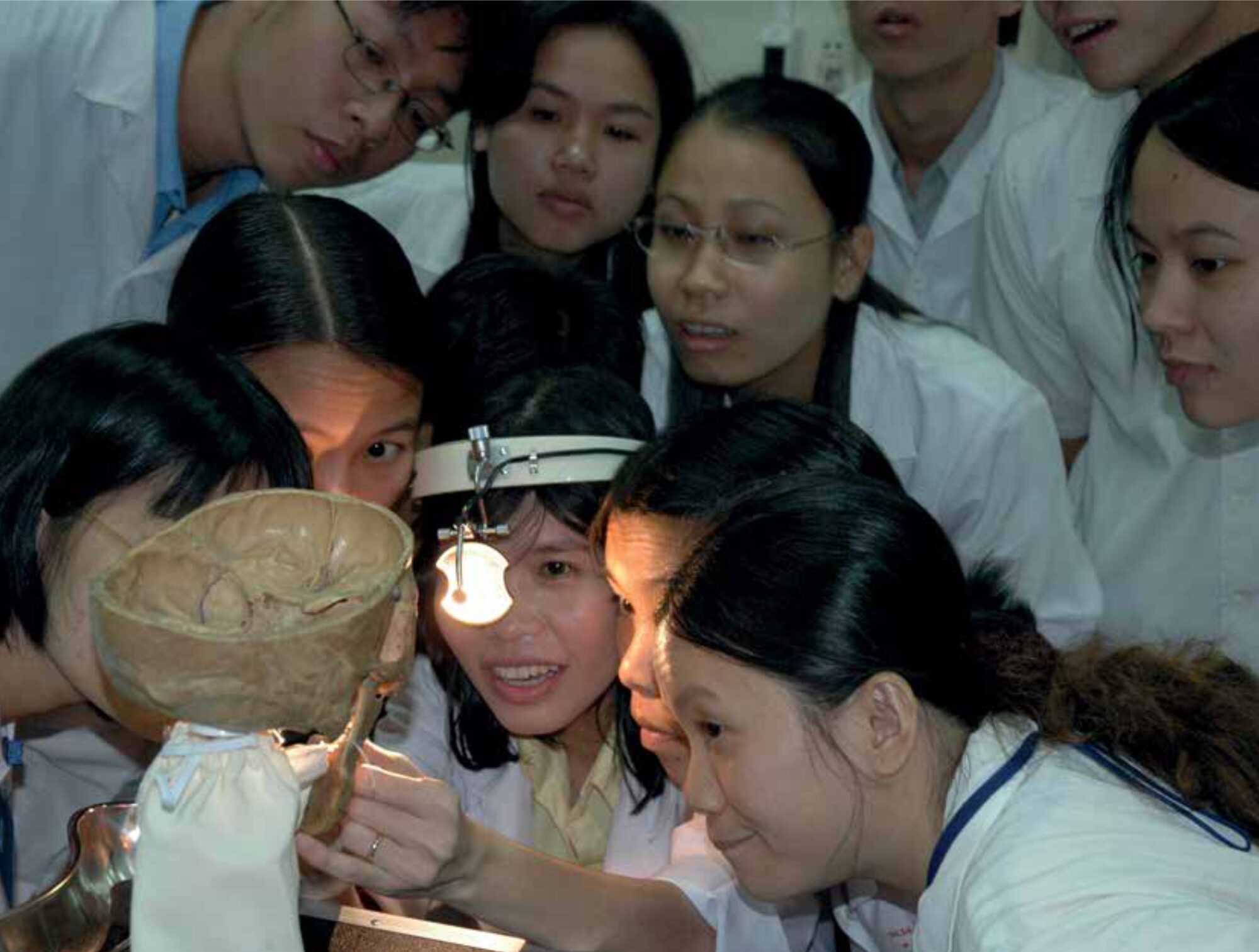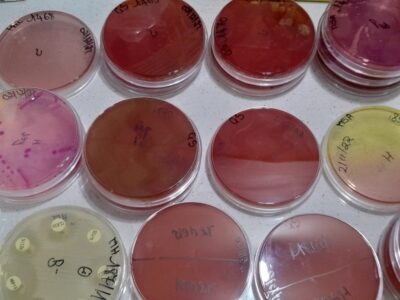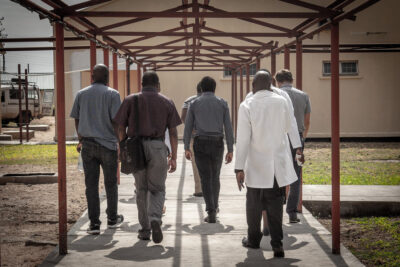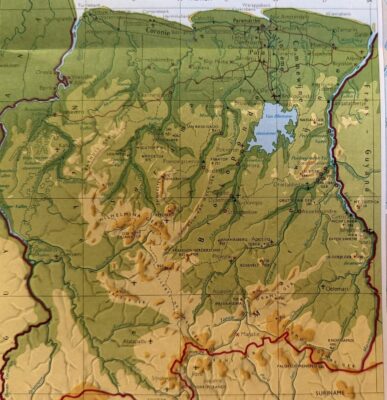Main content
Changing theory, changing practice
Maastricht University (UM) has over 40 years of experience in problem-based learning (PBL). Inspired by McMaster University in Canada, the UM medical school was the first to apply PBL in the Netherlands. PBL was an innovative approach to learning based on the CCCS principles: Contextual, Collaborative, Constructive and Self-directed learning [1]. However, evidence that it actually worked was lacking, which is why so much attention has been paid to evaluating the early years of the medical programme. Were Maastricht students being trained as ‘barefoot doctors’, as critics argued? Many studies have been done to compare the performance of graduates of the Maastricht PBL medical curriculum, on various outcome measures, with the performance of those trained at conventional medical schools [2]. Those studies show that PBL graduates seem to possess the same knowledge, yet perform better in diagnostic reasoning and in interpersonal and professional competencies. The lower dropout rate as well as less study delay among UM medical students also hint towards a more efficient training programme.
This has enticed many other medical faculties and other (para)medical training institutions to follow suit. Over the last 20 years, UM has gained experience in helping schools for higher education abroad to realize customized student-centred education in order to improve healthcare worldwide.
The School for Health Professions Education (SHE) at UM has established three branches: (1) the research school where our approach to education is studied; (2) the educational branch, offering a wide variety of courses; and (3) SHE Collaborates (SHE-C), which focuses on international collaboration. The latter branch draws on the expertise in the other two SHE branches.
As former UM students, we (GB and MK) currently teach students and staff – at UM and abroad – as part of the SHE activities. We have been involved in medical educational design in different contexts, from Mexico to Vietnam and from Ghana to Ukraine. These countries are in different stages of socio-economic development, with a variety of human resource and infrastructure constraints that affect implementation of the ‘optimal’ curriculum. Different health systems and a wide variety in disease patterns require local adaptations in the content of training curricula. In addition, cultural differences may also influence the acceptability of certain educational formats, as well as the approach towards change management.
In a recent study, Frambach et al (2012) conclude: ‘It appears that PBL can be applied in different cultural contexts. However, its globalisation does not postulate uniform processes and outcomes, and culturally sensitive alternatives might be developed’ [3]. In other words, although the initial request from medical schools is often to help them introduce the Maastricht PBL system, merely copying may not be appropriate, but it may be useful to apply the CCCS principles of learning. These principles can be applied in various formats. e.g. in the form of case-based learning, project-based, team-based or challenge-based learning.
Since PBL was introduced in medical education to replace the existing discipline-based and (systems-) integrated curricula, there have been several further innovations. The shift to outcome and competency-based training curricula was underpinned by competency frameworks developed in different Anglophone countries (e.g. CanMEDS [4], ACGME [5], GMC [6]). In the 2009 framework for Undergraduate Medical Education in the Netherlands [7], the typical CanMEDS competences were adopted, without any adaptation to the Dutch situation (!): Medical Expert, Communicator, Collaborator, Manager, Health Advocate, Scholar and Professional.
In our opinion, the educational format is not so relevant when developing or adjusting medical training programmes. What matters more is how the programme contributes to activating and motivating students, and how it stimulates their curiosity and self-directedness, for example by offering appropriate learning facilities such as medical skills laboratories and continuous assessment for learning [8].
Support for medical education abroad
So how does this work? Let’s look at some examples. While Maastricht University is widely known for its PBL approach, few people know that it was the medical school that was first to introduce extensive skills training as an essential part of its educational programme. As Pie Bartholomeus, one of the founding fathers of the Maastricht Skillslab, used to say, ‘Skills training is competence based education avant la lettre’.
From 2004 to 2011, Maastricht University collaborated on a project to support all eight medical faculties in Vietnam in establishing skills labs [9]. Only two of the participating faculties had a PBL curriculum. Some of the schools trained doctors mainly for work in specialist urban hospitals, whereas others prepared them for work in rural health facilities. Moreover, the eight faculties were quite different in terms of resources, both financially and in terms of staffing. Obviously, it was impossible to apply a ‘one size fits all’ model. We held a series of workshops to discuss what is involved in developing and implementing a skills training curriculum and skills lab facilities. These workshops ‘travelled’ around the country with the teachers involved learning with and from each other. This resulted in a national skills training curriculum and a teacher manual with local adaptations in the order and priority of skills trained. The materials needed for skills training (models and manikins) were developed and produced at low cost, using local materials. They proved to be just as effective as the more expensive commercial models, and also in helping students to apply technical procedures and communicate with the patient [10]. Two main lessons were learned from this collaborative project:
- it is important to adapt teaching methods and content to the local context, which can vary enormously even within the same country;
- locally designed and produced training materials are effective and affordable.
In the School of Midwifery in Makeni (SOMM), Sierra Leone, students became involved in producing low-cost alternative models and manikins for their skills training, based on examples from elsewhere (Vietnam, for example), which they would improve. All graduates were trained as preceptors for next generations of SOMM students and some actually later returned as teachers. In this way SOMM is ‘growing its own timber’. The lesson learned here is that the sooner students are involved in adapting the educational process the more sustainable the changes will be.
In an ongoing project in Kenya we are going one step further, co-creating a course on teaching skills with staff from North Coast Medical Training College and UM. Initially this course is meant to serve the needs of medical teachers in East Africa, with the long-term aim of reaching out to medical teachers elsewhere through the networks of the two institutions involved. It may not be possible to offer an identical course elsewhere, but adaptation of the materials developed may be an effective and efficient way to create locally appropriate educational programmes.
Conclusion
Working in such varied contexts as described above, we have learned that to be successful as experts, collaborators, communicators, health advocates, scholars, professionals and managers, one overarching competence is lacking in the existing competence frameworks used in medical training: the competence of adaptability, with respect to language, culture and local context.
Merely copying a curriculum that has been successful in one place to another situation does not do the trick. It is more important to apply the right learning principles, and also more sustainable. Maastricht University – through SHE-C – provides guidance, coaching, motivation and technical support to teams charged with the development and implementation of (para-)medical training in other schools, but we cannot make things work for them. Consider the disadvantages of lecture-based training; copying lecture notes may seem a quick and easy way for students to learn, but it has limited value since it will not necessarily lead to real transfer let alone application of the acquired knowledge.
In line with the transition from passive absorption of knowledge via lecture-based education to activating students to full participation, transformative learning is our next logical step [11]. Translated to collaboration in curriculum design within SHE-C, we now aim co-create and co-implement training programmes from which not only our partner schools will benefit, but our own medical school as well. In order to achieve that, first and foremost the competence of adaptability needs to be nurtured, among students as well as staff. Even though educational models may have proven to be successful in a particular situation, when applying them to a different context the motto should be, ‘Adapt, don’t adopt!’
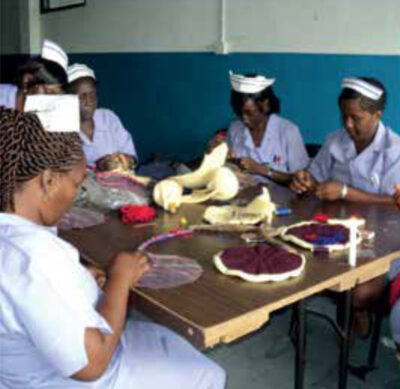
References
- Dolmans DHJM, De Grave W, Wolfhagen IHAP & Van der Vleuten CPM (2005). Problem-based learning: Future challenges for educational practice and research. Medical Education, 39, 732-41.
- Schmidt H. A review of evidence: effects of problem-based learning on students and graduates of Maastricht medical school (2010) In: Van Berkel H, Scherpbier A, Hillen H & Van der Vleuten C: Lessons from Problem-based learning, Oxford University Press. (pp 228-40 chapter 24).
- Frambach JM, Driessen EW, Chan LC & Van der Vleuten CPM (2012). Rethinking the globalisation of problem-based learning: how culture challenges self-directed learning. Medical Education, 46, 738-47.
- Canadian Medical Services: http://canmeds.royalcollege.ca/en/framework
- Accreditation Council for Graduate Medical Education (USA): https://www.acgme.org/
- General Medical Council (UK): http://www.gmc-uk.org/
- http://www.nfu.nl/img/pdf/Raamplan_Artsopleiding_2009.pdf
- Schuwirth LWT, & Van der Vleuten CPM (2011). Programmatic assessment: From assessment of learning to assessment for learning, Medical Teacher, 33 (6): 478-85.
- Ho Chi Minh City University of Medicine and Pharmacy, HCMC, Vietnam ‘Strengthening Medical Skills Training at 8 medical faculties/universities in Vietnam’. in cooperation with HCMC University of Medicine and Pharmacy and seven other public medical faculties/ universities in Vietnam also in cooperation with Hogeschool Arnhem Nijmegen (HAN.
- Trung QT, Scherpbier A, Van Dalen J & Wright PE (2012). Teacher-made models: the answer for medical skills training in developing countries? BMC Medical Education, 12 (1), 981-6.
- Frenk J, Che, L, Bhutta ZA, Cohen J, et al. (2010). Health professionals for a new century: transforming education to strengthen health systems in an interdependent world Lancet 2010; 376: 1923-58.
















































